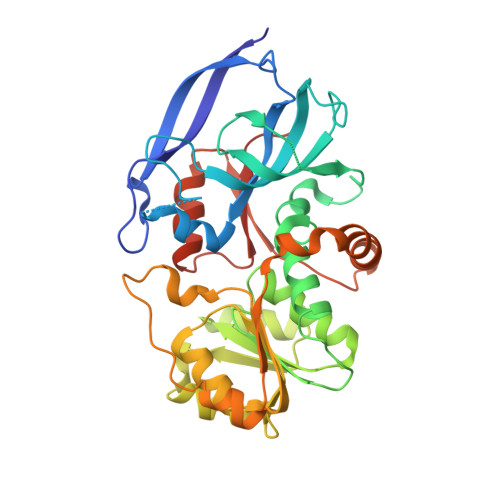Biocatalytic Asymmetric Alkene Reduction: Crystal Structure and Characterization of a Double Bond Reductase fromNicotiana tabacum.
Mansell, D.J., Toogood, H.S., Waller, J., Hughes, J.M., Levy, C.W., Gardiner, J.M., Scrutton, N.S.(2013) ACS Catal 3: 370-379
- PubMed: 27547488
- DOI: https://doi.org/10.1021/cs300709m
- Primary Citation of Related Structures:
4HFJ, 4HFM, 4HFN - PubMed Abstract:
The application of biocatalysis for the asymmetric reduction of activated C=C is a powerful tool for the manufacture of high-value chemical commodities. The biocatalytic potential of "-ene" reductases from the Old Yellow Enzyme (OYE) family of oxidoreductases is well-known; however, the specificity of these enzymes toward mainly small molecule substrates has highlighted the need to discover "-ene" reductases from different enzymatic classes to broaden industrial applicability. Here, we describe the characterization of a flavin-free double bond reductase from Nicotiana tabacum (NtDBR), which belongs to the leukotriene B 4 dehydrogenase (LTD) subfamily of the zinc-independent, medium chain dehydrogenase/reductase superfamily of enzymes. Using steady-state kinetics and biotransformation reactions, we have demonstrated the regio- and stereospecificity of NtDBR against a variety of α,β-unsaturated activated alkenes. In addition to catalyzing the reduction of typical LTD substrates and several classical OYE-like substrates, NtDBR also exhibited complementary activity by reducing non-OYE substrates (i.e., reducing the exocyclic C=C double bond of ( R )-pulegone) and in some cases showing an opposite stereopreference in comparison with the OYE family member pentaerythritol tetranitrate (PETN) reductase. This serves to augment classical OYE "-ene" reductase activity and, coupled with its aerobic stability, emphasizes the potential industrial value of NtDBR. Furthermore, we also report the X-ray crystal structures of the holo-, binary NADP(H)-bound, and ternary [NADP + and 4-hydroxy-3-methoxycinnamaldehyde ( 9a )-bound] NtDBR complexes. These will underpin structure-driven site-saturated mutagenesis studies aimed at enhancing the reactivity, stereochemistry, and specificity of this enzyme.
Organizational Affiliation:
Manchester Institute of Biotechnology, School of Chemistry, and Faculty of Life Sciences, University of Manchester , Manchester, U.K.














